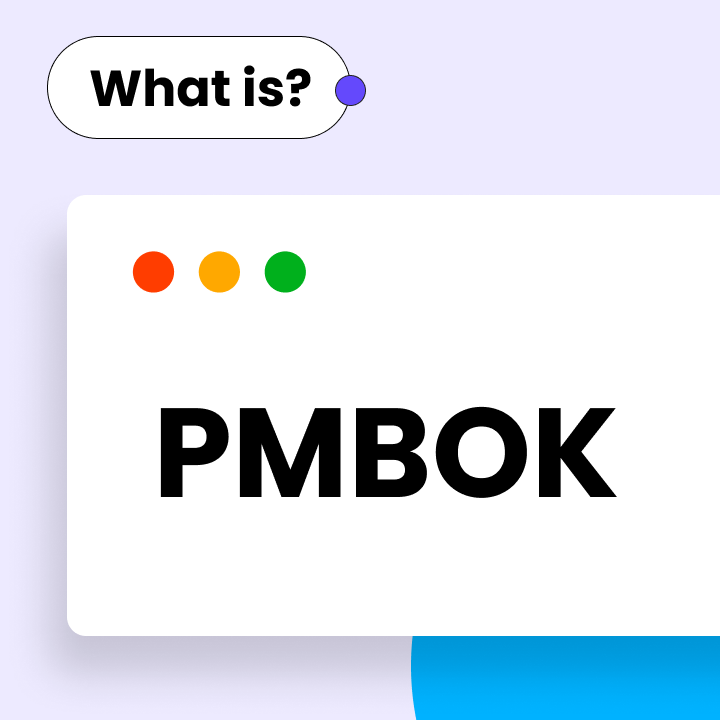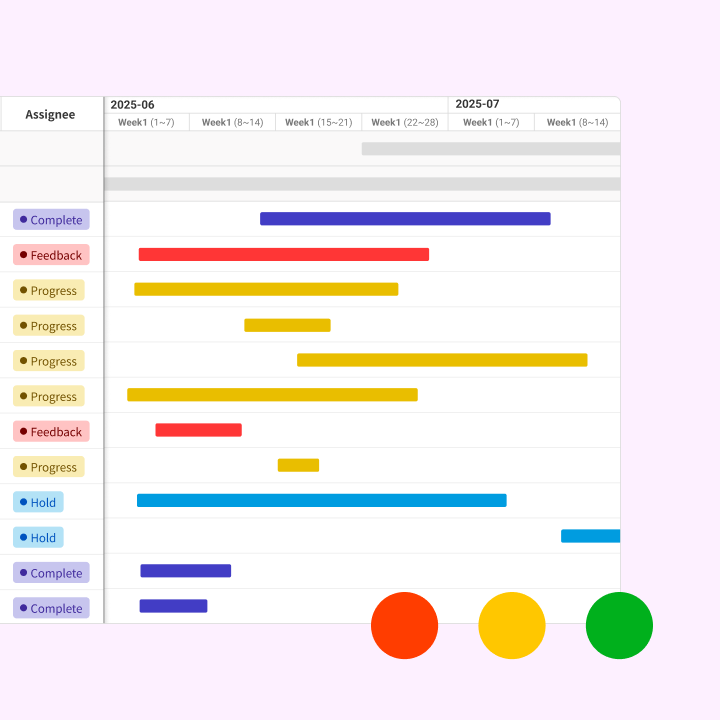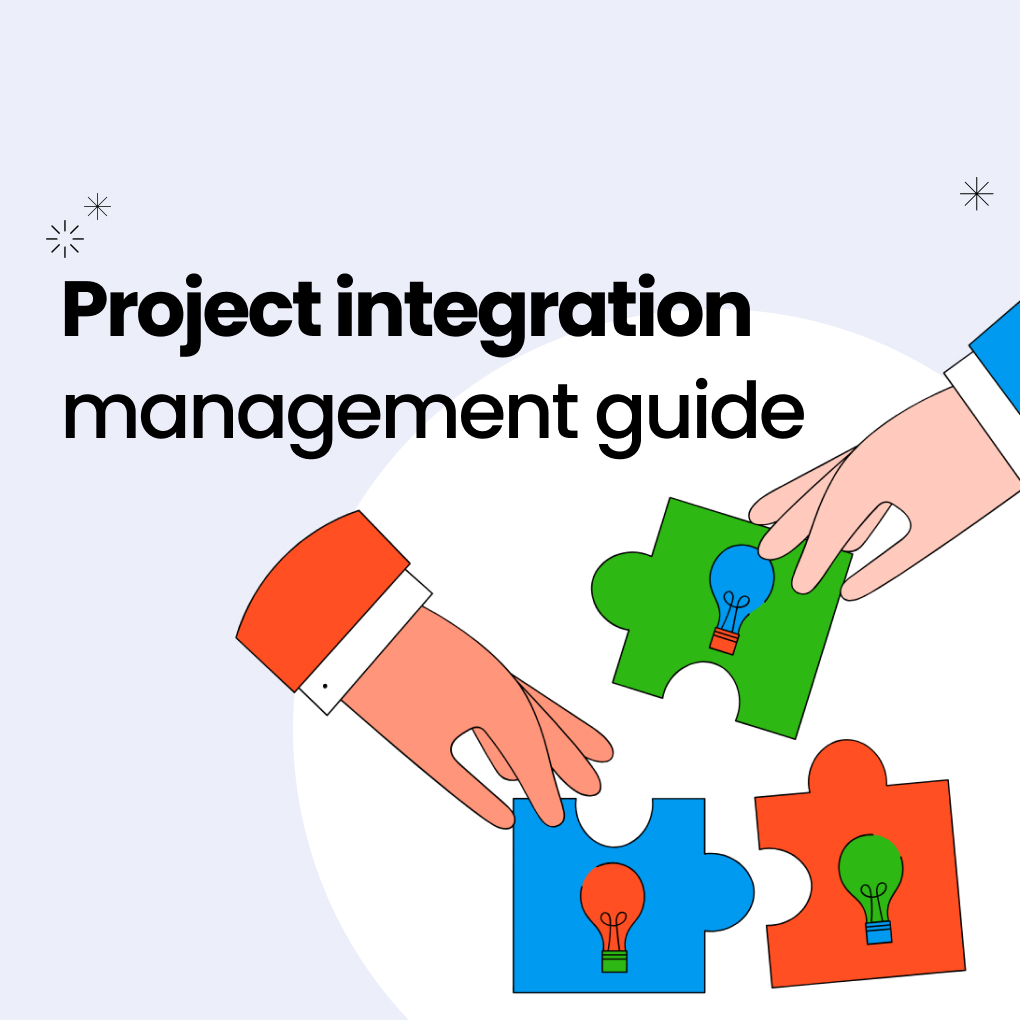What Is the PMBOK?
Managing a project can be challenging, but the right frameworks make it more manageable. One of the most widely recognized resources in project management is the PMBOK Guide (A Guide to the Project Management Body of Knowledge), published by the Project Management Institute (PMI).
The PMBOK Guide outlines best practices, processes, and standards for managing projects effectively. It provides a structured approach to planning, executing, and controlling projects, making it a valuable reference for both new and experienced project managers.
Many professionals use the PMBOK Guide to prepare for the PMP (Project Management Professional) certification exam, while others apply its principles to improve their real-world project planning and execution. The guide covers essential topics like process groups, knowledge areas, and project life cycles.
Importantly, the PMBOK is a flexible framework, not a rigid methodology. This allows teams to adapt its guidance across different industries, team sizes, and project types.
Whether you’re leading a small initiative or managing enterprise-level programs, the PMBOK Guide helps promote consistency, accountability, and success in project management.
PMBOK Structure: Key Components
The PMBOK framework encompasses the entire project management process, from initiation to completion. At its core, the PMBOK defines a project as a temporary endeavor aimed at creating a unique product, service, or result, requiring a management system to coordinate various elements.
The 5 Process Groups
The five Process Groups outline the project life cycle from start to finish, reflecting the natural flow of work. In practice, these roles often overlap and repeat as needed.
Initiating
The initiating processes lay the groundwork for the project. This includes creating a project charter and identifying stakeholders, which help clarify project objectives and secure approval to proceed. This group ensures that the project aligns with business goals before any work begins.
Planning
Planning creates a roadmap for the entire project. It involves defining the scope, schedule, budget, quality standards, and risk management strategies. By planning ahead, you can avoid potential issues. The planning group produces documents that guide the team throughout the project.
Executing
The executing processes bring the plans to life. This involves directing and managing project work, ensuring quality, developing the team, and communicating with stakeholders. Most of the project’s budget and resources are consumed during this phase as the team produces deliverables.
Monitoring & Controlling
These processes run concurrently with execution to track progress. They include measuring performance, managing changes, controlling quality, and monitoring risks. The Monitoring and Controlling group compares actual results to the plans and makes necessary adjustments to keep the project on track.
Closing
Closing processes formally conclude all project activities. This includes completing final work, obtaining approvals, transferring deliverables, and capturing lessons learned. Proper closure allows organizations to learn from each project and enhance future performance.
The 10 Knowledge Areas
The knowledge areas encompass all the elements necessary for effective project management. Each section of the five process groups includes tasks relevant to managing a project.
Integration
Integration management coordinates all project components, ensuring they work together smoothly. This area covers creating the project charter and management plan, as well as monitoring and directing project work.
Scope
Scope management defines what is included in the project. It involves gathering requirements, defining the scope, creating a Work Breakdown Structure (WBS), and verifying deliverables. Effective scope management prevents uncontrolled changes that can derail a project.
Schedule (Time)
Schedule management plans and controls the project timeline. This process includes organizing and estimating activities, creating schedules, and more. Staying on schedule helps meet deadlines and stakeholder expectations.
Cost
Cost management plans and controls the project budget. It involves estimating costs, setting the budget, and managing expenses. Efficient cost management ensures effective project operations.
Quality
Quality management ensures that deliverables meet established requirements. It involves setting quality standards, maintaining quality during implementation, and conducting inspections. Quality processes help prevent defects and reduce the need for rework.
Procurement
Procurement management involves acquiring goods and services from outside the project team. This includes planning purchases, conducting procurements, and managing supplier interactions. Following proper procurement practices ensures that the right resources are available at the right time and price.
Resource (HR)
Resource management organizes and leads the project team. It includes planning for resources, acquiring team members, developing skills, and managing performance. Effective resource management fosters a motivated and productive team.
Communications
Communications management ensures the proper flow of information. It involves planning communications, distributing information, and managing stakeholder expectations. Effective communication prevents misunderstandings and keeps everyone informed.
Risk
Risk management focuses on identifying and addressing potential issues. It includes planning for risks, identifying and analyzing them, and developing response strategies. Proactive risk management mitigates impacts and reduces surprises.
Stakeholder
Stakeholder management involves identifying individuals affected by the project and planning their engagement. Building strong relationships with stakeholders fosters support and minimizes resistance to the project.
Overview of PMBOK Processes
The PMBOK framework outlines 49 processes that encompass all facets of project management. These processes are organized into knowledge areas and process groups, creating a structured matrix.
Detailed Look at the 49 Processes
Each process consists of inputs, tools and techniques, and outputs. For example, the “Define Scope” process uses requirements documentation as its input, employs expert judgment as a tool, and produces a project scope statement as its output. All processes work together to fulfill project management requirements from start to finish.
Connections Between Groups and Areas
Every process is categorized within a specific knowledge area and process group. For instance, “Generate Schedule” is part of the Schedule knowledge area and falls under the Planning process group. This organization helps project managers identify effective tools for each project phase. The matrix illustrates how all components of project management are interconnected and support one another.
The PMBOK methodology provides a comprehensive framework that aids project managers in navigating complex projects. By understanding these components and their relationships, professionals can effectively apply the framework to their specific projects and organizations. The system is adaptable to any project size or type, maintaining consistent standards.
Defining a Project in PMBOK Terms
The PMBOK Guide clearly defines key project management terms. According to the guide, a project is a temporary endeavor aimed at creating a unique product, service, or result. “Temporary” means that every project has a defined start and end date, while “unique” indicates that the project work differs from routine operations.
Projects are distinct from ongoing business activities. Unlike regular operations that keep a business running, projects have specific goals and deliverables. The PMBOK Guide explains how projects fit into and interact with other organizational structures.
A program consists of related projects managed together to achieve benefits that would not be possible if managed separately. A portfolio includes all projects and programs aligned with a business strategy. Understanding these distinctions is crucial for applying the Project Management Body of Knowledge at any level. The PMBOK Guide provides frameworks for managing various types of projects while focusing on delivering value.
Applying the PMBOK Guide in Real Projects
The PMBOK Guide is not just a reference; it has real-world uses too. Specialists use it for certification and routine project tasks, making it a commonly adopted standard.
Those going for PMP certification need to grasp crucial knowledge that will be evaluated. Candidates study its processes, knowledge areas, and terms to show their grasp of project management standards. Many training programs match their content with the PMBOK to fulfill PMI’s criteria.
Companies frequently use the PMBOK framework to boost their own project management methods. They adjust its principles to their specific requirements while sticking to best practices. The guide’s adaptable design allows for scaling processes to fit projects of various sizes.
PMBOK Compared to Other Methodologies
While the PMBOK is a universal standard, it is not the only framework for managing projects. Understanding how it compares to other methodologies helps individuals choose the most suitable approach.
PMBOK vs. Agile
Traditionally, PMBOK emphasized predictive, plan-driven project management. In contrast, Agile methods focus on flexibility, iterative delivery, and customer collaboration. The 6th and 7th Editions of PMBOK have integrated Agile principles, moving away from a strict emphasis on documentation and upfront planning. The PMBOK framework now accommodates hybrid approaches, allowing teams to combine planning with Agile practices.
PMBOK vs. PRINCE2
PRINCE2 is another structured methodology, but its modeling differs from PMBOK. PRINCE2 follows a strict process model with defined roles and management stages, while PMBOK offers more flexibility. PMBOK serves as a knowledge base applicable across various industries, whereas PRINCE2 was developed as a UK government standard. PMBOK’s broader scope makes it more adaptable, while PRINCE2 is more prescriptive. Both methodologies are valuable, but PMBOK is recognized as the global standard.
Common FAQs About PMBOK
Is PMBOK the same as PMP?
No, PMBOK and PMP are not the same. The PMBOK Guide is a reference for project management standards and best practices, while PMP (Project Management Professional) is a certification from PMI that validates an individual’s ability to manage and lead projects. The PMP exam is based on the PMBOK Guide and requires both experience and study.
How often is PMBOK updated?
PMI typically revises the PMBOK Guide every few years to reflect changes in project management practices. The 6th edition was released in 2017, followed by the 7th edition in 2021. The latest version shifted from a process-based approach to a principles-based framework, adapting to the evolving needs of project management.
Can I use PMBOK in Agile projects?
Yes, the PMBOK Guide is applicable to Agile projects, especially the 6th and 7th editions, which incorporate Agile and hybrid approaches. Earlier versions focused on traditional project management, but the new editions provide guidance on iterative methods, making it easier to integrate PMBOK with Agile practices. Many teams successfully blend the structure of PMBOK with the flexibility of Agile.
Final Thoughts: Is PMBOK Still Relevant?
The PMBOK remains a vital resource in the evolving landscape of project management. While some may view it as outdated for fast-paced environments, the 7th edition’s emphasis on principles and outcomes enhances its adaptability.
Today, project teams increasingly value the combination of PMBOK’s structured framework with Agile and hybrid methodologies. This approach addresses various aspects, from risk management to stakeholder engagement. The PMBOK covers a wide range of topics, and newer methods typically build upon rather than replace established practices. Those seeking certification must recognize that PMBOK knowledge is essential for PMP and other PMI credentials.
The true measure of relevance? The PMBOK is consistently updated to align with global practices embraced by organizations worldwide. Both new and experienced project managers must understand these principles to thrive in their careers.




